Amazon River
 From Nwe
From Nwe The Amazon River of South America is the world's largest river and the lifeblood of the world's largest ecosystem, spanning two-fifths of an entire continent. It is home to a huge variety of animals and plants that dwell in its lush, evergreen environment. It is the mightiest river in the world by volume, with six times greater total river flow than the next six largest rivers combined, and the most extensive drainage basin in the world. Because of its vast dimensions it is sometimes called The River Sea. Running about 4,000 miles (6,400 kilometers), most sources regard the Amazon as the second longest river in length, compared to Africa's Nile River, though this is a matter of some dispute.
Originally explored in the sixteenth century by Europeans who used the Amazon to traverse the formidable environment, the vast waterway fed by numerous tributaries eventually gave rise to commerce in later years. Utilizing boats and steamers, Europeans, slaves, and indigenous peoples increasingly carried out of the rain forest a rich array of highly sought-after products.
In recent years, a highway has made further inroads into the region, while Brazil has sought to keep the Amazon basin free from foreign exploitation. However today, the Amazon is ecologically endangered from reckless deforestation and a lack of public understanding of the importance of this remote region.
The vast Amazon
The area covered by the Amazon River and its tributaries more than triples between the dry season and wet season over the course of a year. In an average dry season, 110,000 square kilometers of land are water-covered, while in the wet season the flooded area of the Amazon basin rises to 350,000 square kilometers. At its widest point the Amazon River can be 6.8 miles (11 kilometers) wide during the dry season, but during the rainy season when the Amazon River floods the surrounding plains it can be up to 24.8 miles (40 kilometers) wide.
The quantity of freshwater released by the Amazon into the Atlantic Ocean is enormous: up to 300,000 square meters per second in the rainy season. The Amazon is responsible for one-fifth of the total volume of freshwater entering the oceans worldwide. Offshore of the mouth of the Amazon, potable water can be drawn from the ocean while still out of sight of the coastline, and the salinity of the ocean is notably lower a hundred miles out to sea.
The Amazon estuary is over 202 miles (325 kilometers) wide. The main river (which is between approximately one and six miles wide) is navigable for large ocean steamers to Manaus, Brazil, more than 900 miles (1,500 kilometers) upriver from the mouth. Smaller ocean vessels of 3,000 tons can reach as far as Iquitos, Peru, 2,250 miles (3,600 kilometers) from the sea. Smaller riverboats can reach 486 miles (780 kilometers) higher as far as Achual Point. Beyond that, small boats frequently ascend to the Pongo de Manseriche, just above Achual Point.
The Amazon drains an area of some 2,722,000 square miles, or nearly 40 percent of South America. It gathers its waters from 5 degrees north latitude to 20 degrees south latitude. Its most remote sources are found on the inter-Andean plateau, just a short distance from the Pacific Ocean; and, after coursing through the interior of Peru and across Brazil, it enters the Atlantic Ocean at the equator. The Amazon has changed its drainage several times, from westward in the early Cenozoic period to its present eastward locomotion following the uplift of the Andes Mountains.
Source and upper Amazon
The Upper Amazon comprises a series of major river systems in Peru that flow north and south into the Marañón River. Among others, these include the following rivers: Morona, Pastaza, Nucuray, Urituyacu, Chambira, Tigre, Nanay, Napo, Huallaga, and Ucayali. Originating in the snow-crested Andes Mountains high above Lake Lauricocha in central Peru, the headstream of the Marañón River rises in the glaciers in what is known as the Nevado de Yarupa. Rushing through waterfalls and gorges in an area of the high jungle called the Pongos, the Marañón River flows about 1,000 miles from west-central to northeast Peru before it combines with the Ucayali River, just below the provincial town of Nauta, to form the mighty Amazon River. The primary tributaries of the Marañón River are, from south to north, the Crisnejas, Chamayo, Urtcubamba, Cenepa, Santiago, Moroña, Pastaza, Huallaga, and Tiger rivers.
The most distant source of the Amazon has been firmly established as a glacial stream on a snowcapped, 18,363-foot (5,597-meter) peak called Nevado Mismi in the Peruvian Andes, roughly 160 kilometers west of Lake Titicaca and 700 kilometers southeast of Lima, Peru. The waters from Nevado Mismi flow into the Quebradas Carhuasanta and Apacheta, which flow into the Río Apurímac, which is a tributary of the Ucayali that later joins the Marañón River to form the Amazon proper. Formally, though, the union of the Ucayali and the Marañón form the Río Amazonas, which changes its name to Solimões on the triple frontier between Peru, Colombia, and Brazil, and later changes its name back to the Amazon only after it meets the Rio Negro near Manaus.
After the confluence of Río Apurímac and Ucayali, the river leaves Andean terrain and is instead surrounded by a flood plain. From this point to the Marañón River, some 1,000 miles (1,600 kilomters), the forested banks are just out of water, and are inundated long before the river attains its maximum flood-line. The low river banks are interrupted by only a few hills, and the river enters the enormous Amazon Rainforest.
The river systems and flood plains in Brazil, Peru, Ecuador, Colombia, and Venezuela whose waters drain into the Solimões and its tributaries are called the Upper Amazon.
Toward the sea
The breadth of the Amazon in some places is as much as four to six miles (six to ten kilometers) from one bank to the other. At some points, for long distances, the river divides into two main streams with inland and lateral channels, all connected by a complicated system of natural canals, cutting the low, flat igapó lands, which are never more than 15 feet (5 meters) above low river, into many islands.
At the narrows of Pará Óbidos, 400 miles (600 meters) from the sea, the Amazon narrows, flowing in a single streambed, a mile (1.6 kilometers) wide and over 200 feet (60 meters) deep, through which the water rushes toward the sea at the speed of 4 to 5 (6 to 8 kilometers) miles per hour.
From the village of Canaria at the great bend of the Amazon to the Negro 600 miles (1,000 kilometers) downstream, only very low land is found, resembling that at the mouth of the river. Vast areas of land in this region are submerged at high water, above which only the upper part of the trees of the somber forests appear. Near the mouth of the Rio Negro to Serpa, nearly opposite the river Madeira, the banks of the Amazon are low, until approaching Manaus, they rise to become rolling hills. At Óbidos, a bluff 56 feet (17 meters) above the river is backed by low hills. The Lower Amazon seems to have once been a gulf of the Atlantic Ocean, the waters of which washed the cliffs near Óbidos.
Only about 10 percent of the water discharged by the Amazon enters the mighty stream downstream of Óbidos, very little of which is from the northern slope of the valley. The drainage area of the Amazon basin above Óbidos is about 2 million square miles (5 million square kilometers), and, below, only about 400,000 square miles (1 million square kilometers), or around 20 percent, exclusive of the 600,000 square miles (1.4 million square kilometers) of the Tocantins basin.
In the lower reaches of the river, the north bank consists of a series of steep, table-topped hills extending for about 150 miles (240 kilometers) from opposite the mouth of the Xingu as far as Monte Alegre. These hills are cut down to a kind of terrace which lies between them and the river.
Monte Alegre reaches an altitude of several hundred feet. On the south bank, above the Xingu, an almost unbroken line of low bluffs bordering the flood-plain extends nearly to Santarem, in a series of gentle curves before they bend to the southwest, and, abutting upon the lower Tapajos, merge into the bluffs that form the terrace margin of the Tapajos river valley.
Mouth and tides
The width of the mouth of the river is usually measured from Cabo do Norte to Punto Patijoca, a distance of some 207 miles (330 kilometers); but this includes the ocean outlet, 40 miles (60 kilometers) wide, of the Para River, which should be deducted, as this stream is only the lower reach of the Tocantins. It also includes the ocean frontage of Marajó, an island about the size of Denmark lying in the mouth of the Amazon.
Following the coast, a little to the north of Cabo do Norte, and for 100 miles (160 kilometers) along its Guiana margin up the Amazon, is a belt of half-submerged islands and shallow sandbanks. Here the tidal phenomenon called the tidal bore, or pororoca, occurs, where the depths are not over 4 fathoms (7 meters). The tidal bore starts with a roar, constantly increasing, and advances at the rate of 15 to 25 kilometers per hour (10 to 15 miles per hour), with a breaking wall of water 5 to 12 feet (4 to 5 meters) high.
The bore is the reason the Amazon does not have a river delta; the ocean rapidly carries away the vast volume of silt carried by the Amazon, making it impossible for a delta to grow. It also has a very large tide sometimes reaching 20 feet.
The average depth of the river in the height of the rainy season is 120 feet (40 meters) and the average width can be nearly 25 miles. It starts to rise in November, and increases in volume until June, then falls until the end of October. The rise of the Negro branch is not synchronous; the rainy season does not commence in its valley until February or March. By June it is full, and then it begins to fall with the Amazon. The Madeira rises and falls two months earlier than the Amazon.
Amazonian Rainforest
From the east of the Andes Mountains, the vast Amazon Rainforest begins. It is the largest rain forest in the world and is of great ecological significance, as its biomass is capable of absorbing enormous amounts of carbon dioxide. The conservation ethic of the Amazon Rainforest is therefore a major issue.
The rain forest is supported by the extremely wet climate of the Amazon basin. The Amazon and its hundreds of tributaries flow slowly across the landscape, with an extremely shallow gradient sending them towards the sea: Manaus, 1,000 miles (1,600 kilometers) from the Atlantic, is only 144 feet (44 meters) above sea level.
The biodiversity within the rain forest is extraordinary: the region is home to at least 2.5 million insect species, tens of thousands of plants, and some 2,000 birds and mammals. One-fifth of all of the world's species of birds can be found in the Amazon Rainforest.
The diversity of plant species in the Amazon basin is the highest on Earth. Some experts estimate that one square kilometer may contain over 75,000 types of trees and 150,000 species of higher plants. One square kilometer of the Amazon Rainforest can contain about 90,000 tons of living plants.
Wildlife
The waters of the Amazon support a diverse range of wildlife. Along with the Orinoco, the river is one of the main habitats of the Boto, also known as the Amazon River Dolphin. The largest species of river dolphin, it can grow to lengths of up to 2.6 meters.
Also present in large numbers are the notorious piranha, carnivorous fish that congregate in large schools, and may attack livestock and even humans. However, experts believe their reputation for ferocity is unwarranted. Only a few species have been known to attack humans, and many are solely fish-eaters and do not school. The anaconda snake is found in shallow waters in the Amazon basin. One of the world's largest species of snake, the anaconda spends most of its time in the water, with just its nostrils above the surface. Anacondas have been known to occasionally attack fishermen.
The river also supports thousands of species of fish, as well as crabs and turtles.
History
The first descent by a European of the Amazon from the Andes to the sea was made by Francisco de Orellana in 1541.
The first ascent by a European of the river was made in 1638 by Pedro Teixeira, a Portuguese, who reversed the route of Orellana and reached Quito by way of the Napo River. He returned in 1639 with the two Jesuit fathers, Cristóbal Diatristán de Acuña and Artieda, who had been delegated by the viceroy of Peru to accompany Teixeira.
Naming the river
Before the conquest of South America, the Rio Amazonas had no general name; instead, indigenous peoples had names for the sections of the river they occupied, such as Paranaguazu, Guyerma, Solimões, and others.
In the year 1500, Vicente Yañez Pinzon, in command of a Spanish expedition, became the first European to explore the river, exploring its mouth when he discovered that the ocean off the shore was freshwater. Pinzon called the river the Rio Santa Maria de la Mar Dulce, which soon became abbreviated to Mar Dulce, and for some years, after 1502, it was known as the Rio Grande.
Pinzon's companions called the river El Río Marañón. The word Marañón is thought by some to be of indigenous origin. This idea was first stated in a letter from Peter Martyr to Lope Hurtado de Mendoza in 1513. However, the word may also be derived from the Spanish word maraña; meaning a tangle, a snarl, which well represents the bewildering difficulties that the earlier explorers met in navigating not only the entrance to the Amazon, but the whole island-bordered, river-cut, and indented coast of what is now the Brazilian state of Maranhão.
The name Amazon arises from a battle that Francisco de Orellana had with a tribe of Tapuyas where the women of the tribe fought alongside the men, as was the custom among the entire tribe. Orellana derived the name Amazonas from the ancient Amazons of Asia and Africa described by Herodotus and Diodorus.
The colonial encounter and Amazonia
During what many archaeologists call the formative period, Amazonian societies were deeply implicated in the emergence of South America's highland agrarian systems, and possibly contributed directly to the social and religious fabric constitutive of the Andean civilization orders.
For 350 years after the European discovery of the mighty Amazon by Pinzon, the Portuguese portion of the basin remained a virtually undisturbed wilderness, occupied by indigenous peoples. While there is ample evidence for large-scale, pre-Columbian social formations, including chiefdoms, in many areas of Amazonia (particularly the inter-fluvial regions), the former indigenous inhabitants probably had relatively low population densities.
In what is currently Brazil, Ecuador, Bolivia, Colombia, Peru, and Venezuela a number of colonial and religious settlements were established along the banks of primary rivers and tributaries for the purpose of trade, slaving, and evangelization among the putatively savage indigenous peoples of the vast rain forest.
The total population of the Brazilian portion of the Amazon basin in 1850 was perhaps 300,000, of whom about two-thirds comprised by Europeans and slaves, the slaves amounting to about 25,000. In Brazil, the principal commercial city, Para, had from 10,000 to 12,000 inhabitants, including slaves. The town of Manaus at the mouth of the Rio Negro had a population of 1,000 to 1,500. All the remaining villages, as far up as Tabatinga, on the Brazilian frontier of Peru, were relatively small.
On September 6, 1850, the emperor, Dom Pedro II, sanctioned a law authorizing steam navigation on the Amazon, and gave Barão de Mauá, Irineu Evangilista de Sousa, the task of putting it into effect. He organized the "Compania de Navigacao e Commercio do Amazonas" at Rio de Janeiro in 1852; and in the following year it commenced operations with three small steamers, the Monarch, the Marajó, and Rio Negro.
At first, navigation was principally confined to the main river; and even in 1857 a modification of the government contract only obliged the company to a monthly service between Pará and Manaus, with steamers of 200 tons of cargo capacity, a second line to make six round voyages a year between Manaus and Tabatinga, and a third, two trips a month between Para and Cameta. This was the first step in opening up the vast interior.
The success of the venture called attention to the opportunities for economic exploitation of the Amazon, and a second company soon opened commerce on the Madeira, Purus, and Negro; a third established a line between Pará and Manaus; and a fourth found it profitable to navigate some of the smaller streams. In that same period, the Amazonas Company was increasing its fleet. Meanwhile, private individuals were building and running small steam craft of their own on the main river as well as on many of its tributaries.
On July 31, 1867, the government of Brazil, constantly pressed by the maritime powers and by the countries encircling the upper Amazon basin, especially Peru, decreed the opening of the Amazon to all flags but limited this to certain defined points: Tabatinga on the Amazon, Cametaon on the Tocantins, Santare on the Tapajos, Borba on the Madeira, and Manáosthe on Rio Negro. The Brazilian decree took effect on September 7, 1867.
Thanks in part to the mercantile development associated with steam boat navigation, coupled with the internationally driven demand for natural rubber (1880–1920), Manáos (now Manaus); Para, Brazil; and Iquitos, Peru, became thriving, cosmopolitan centers of commerce and spectacular—albeit illusory—modern, urban growth. This was particularly the case for Iquitos during its late-nineteenth and early twentieth-century Rubber Bonanza zenith when this dynamic boom-town was known abroad as the St. Louis of the Amazon.
The first direct foreign trade with Manáos was commenced around 1874. Local trade along the river was carried on by the English successors to the Amazonas Company—the Amazon Steam Navigation Company—as well as numerous small steamboats, belonging to companies and firms engaged in the rubber trade, navigating the Negro, Madeira, Purfis, and many other tributaries, such as the Marañón to ports as distant as Nauta, Peru.
By the turn of the twentieth century, the principal exports of the Amazon basin were rubber, cacao, Brazil nuts, and a few other products of minor importance, such as pelts and exotic' forest produce like resins and barks, woven hammocks, prized bird feathers, live animals, and extracted goods, such as lumber and gold.
Twentieth-century concerns
Four centuries after the European discovery of the Amazon River, the total cultivated area in its basin was probably less than 25 square miles (65 square kilometers), excluding the limited and crudely cultivated areas among the mountains at its extreme headwaters. This situation changed dramatically during the twentieth century.
Wary of foreign exploitation of the nation's resources, Brazilian governments in the 1940s set out to develop the interior, away from the seaboard where foreigners owned large tracts of land. The original architect of this expansion was President Getúlio Vargas, the demand for rubber from the Allied forces in World War II providing funding for the drive.
The construction of the new capital Brasilia in the interior in 1960 also contributed to the opening up of the Amazon basin. A large-scale, colonization program saw families from northeastern Brazil relocated to the forests, encouraged by promises of cheap land. Many settlements grew along the road from Brasilia to Belém, but rain forest soil proved difficult to cultivate.
Still, long-term development plans continued. Roads were cut through the forests, and in 1970, the work on the Trans-Amazon Highway network began. The network's three pioneering highways were completed within ten years, connecting all the major cities of the Brazilian Amazon interior.
Cattle farming became a major impetus in deforestation, with military governments in the 1960s and 1970s heavily subsidizing the creation of large ranches. By the 1980s, the rate of destruction of the rain forest was dizzying, and it is estimated that over one-fifth of the total area of the rain forest has now been clear-cut. The preservation of the remaining forest is becoming an ever more prominent concern.
Longest rivers in the Amazon system
- 6,387 km - Amazon, South America
- 3,379 km - Purus, Peru / Brazil, (2,948 km) (3,210 km)
- 3,239 km - Madeira, Bolivia / Brazil
- 2,820 km - Yapura, Colombia / Brazil
- 2,750 km - Tocantins, Brazil, (2,416 km) (2,640 km)
- 2,575 km - Araguaia, Brazil (tributary of Tocantins)
- 2,410 km - Juruá, Peru / Brazil
- 2,250 km - Negro, South America
- 2,100 km - Xingu, Brazil
- 1,749 km - Guaporé, Brazil / Bolivia (tributary of Madeira)
- 1,575 km - Içá (Putumayo), South America
- 1,415 km - Marañón, Peru
- 1,300 km - Iriri, Brazil (tributary of Xingu)
- 1,240 km - Juruena, Brazil (tributary of Tapajós)
- 1,200 km - Tapajós, Brazil
- 1,130 km - Madre de Dios, Peru / Bolivia (tributary of Madeira)
- 1,100 km - Huallaga, Peru (tributary of Marañón)
References
ISBN links support NWE through referral fees
- Gordon, Nick. In the Heart of the Amazon. Metro Publishing, 2002. ISBN 978-1843580256
- Smith, Nigel. The Amazon River Forest: A Natural History of Plants, Animals, and People. Oxford University Press, 1999. ISBN 978-0195126839
- Watson, Galadriel. The Amazon Rain Forest: The Largest Rain Forest In The World. Weigl Publishers, 2004. ISBN 978-1590362709
External links
All links retrieved May 17, 2021.
- Amazon River and Amazon Rainforest virtual tour. Destination360.com.
- Photos of the Amazon River. Underwatercolours.com.
- Amazon River and Amazon rainforest information. Amazon-rainforest.org.
- An Amazon River web site. Mbarron.net.
Credits
New World Encyclopedia writers and editors rewrote and completed the Wikipedia article in accordance with New World Encyclopedia standards. This article abides by terms of the Creative Commons CC-by-sa 3.0 License (CC-by-sa), which may be used and disseminated with proper attribution. Credit is due under the terms of this license that can reference both the New World Encyclopedia contributors and the selfless volunteer contributors of the Wikimedia Foundation. To cite this article click here for a list of acceptable citing formats.The history of earlier contributions by wikipedians is accessible to researchers here:
The history of this article since it was imported to New World Encyclopedia:
Note: Some restrictions may apply to use of individual images which are separately licensed.
↧ Download as ZWI file | Last modified: 02/04/2023 04:05:02 | 13 views
☰ Source: https://www.newworldencyclopedia.org/entry/Amazon_river | License: CC BY-SA 3.0
 ZWI signed:
ZWI signed:
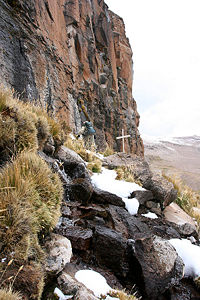
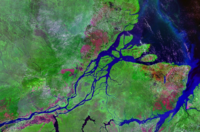


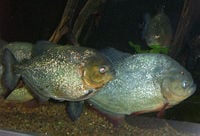


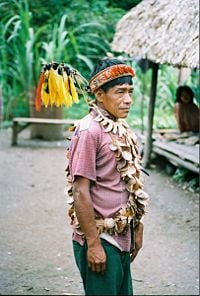
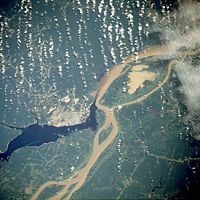
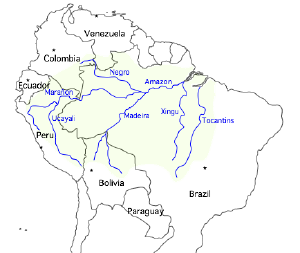
 KSF
KSF